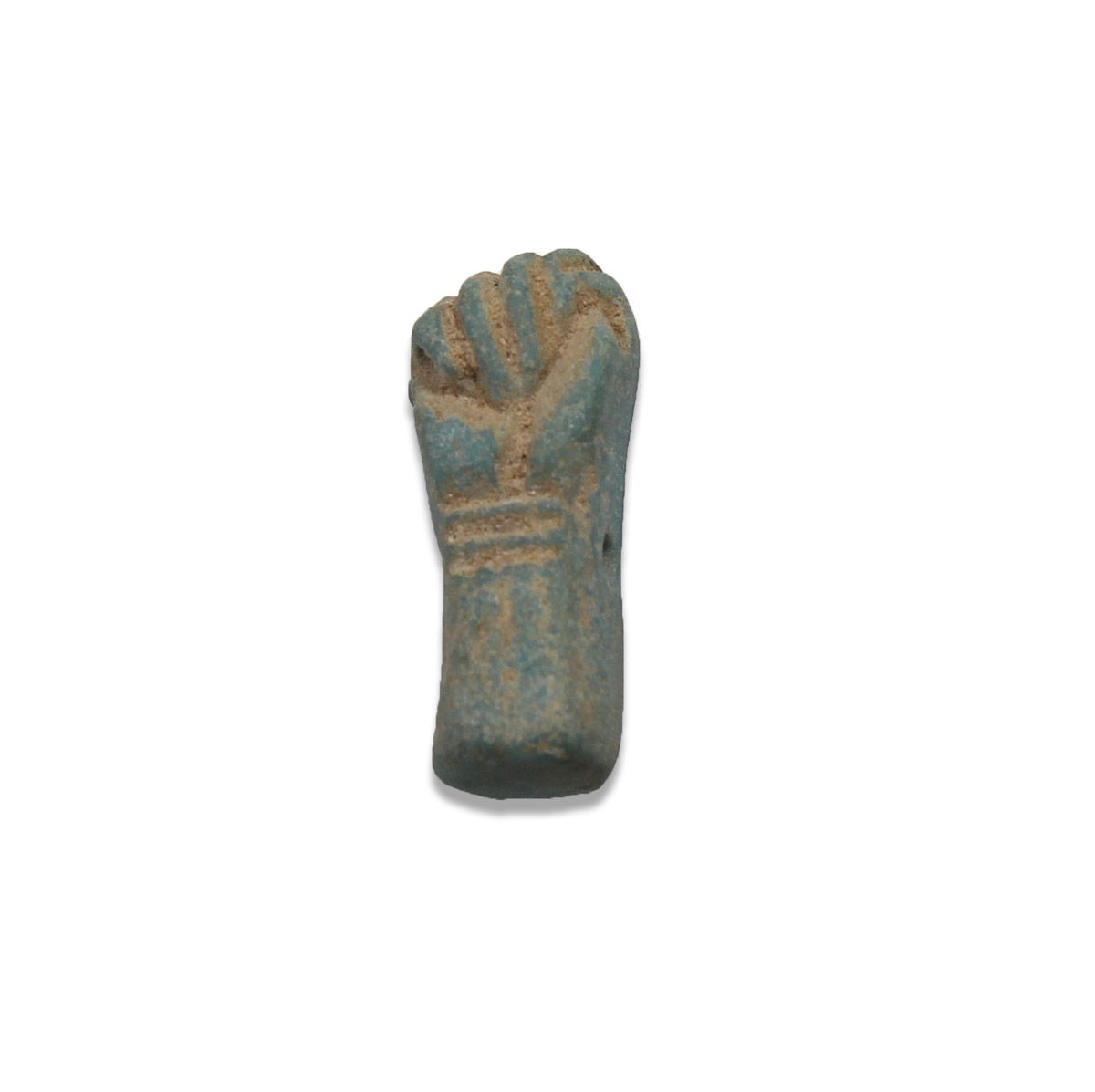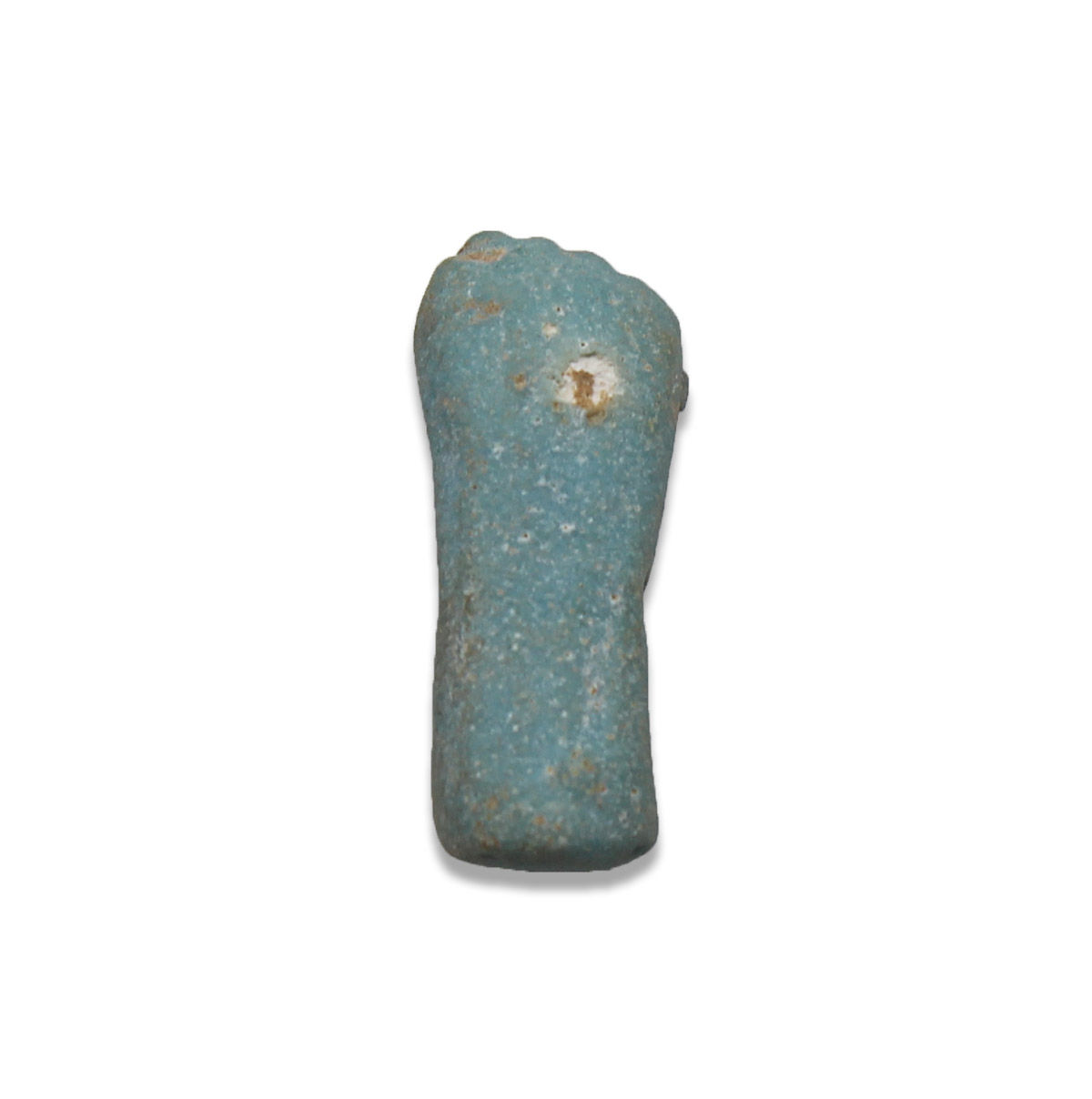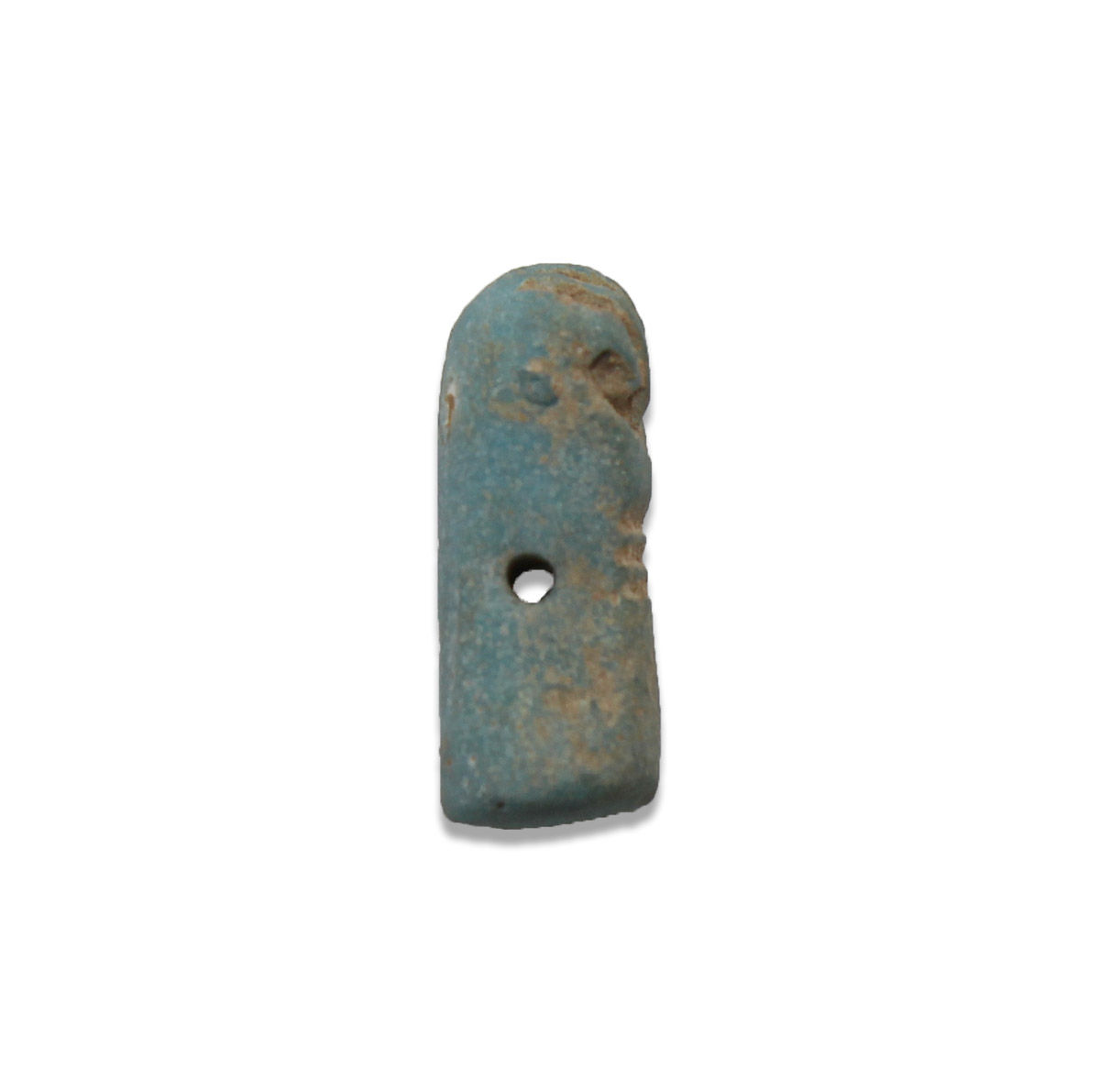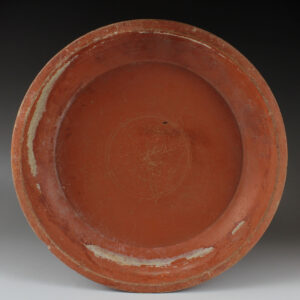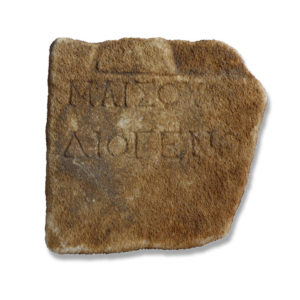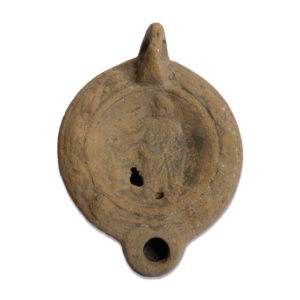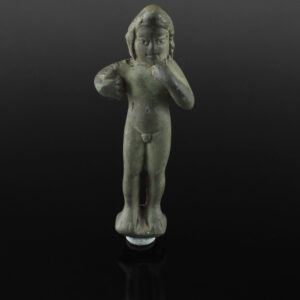Description
| ITEM | Votive ‘Manu fica’ amulet |
| MATERIAL | Faience |
| CULTURE | Roman |
| PERIOD | 1st – 3rd Century A.D |
| DIMENSIONS | 18 mm x 7 mm |
| CONDITION | Good condition |
| PROVENANCE | Ex English private collection, London, G.H. Collection, acquired before 1988 |
The fig sign is a mildly obscene gesture used at least since the Roman Age in Italy and Southern Europe and parts of the Mediterranean region, including in Turkish culture, and has also been adopted by Slavic cultures. The gesture uses a thumb wedged in between two fingers. This gesture is most commonly used to ward off the evil eye, insult someone, or deny a request. In ancient Rome, the fig sign, or manu fica, was made by the pater familias to ward off the evil spirits of the dead as a part of the Lemuria ritual.
The Lemuralia or Lemurian festival is the name given to a pagan religious celebration of the ancient Romans, in which they performed apotropaic rites for three days and nights to exorcise the ghosts of the restless dead and prevent them from haunting their homes.
The description of the ceremony or domestic liturgy carried out in these days by the Roman citizens was given by the Latin poet Ovid in his Fasti: the pater familias would walk barefoot through the house at midnight and make an offering of black beans that he would throw behind his shoulder without turning or looking back, making a fig or chestnut as a defence spell (digitis medio cum pollice iunctis), while he noticed a bronze jug, pot or pot and pronounced the formula: Manes exite paterni! / “Come out, spirits of the ancestors”, in a completely apotropic context.


